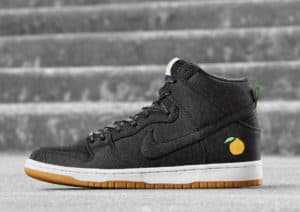(Bloomberg)—Nike started cleaning up its stats sheet.
For the first time, the sneaker empire this week declined to report “future orders,” a critical measure of wholesale demand from the galaxy of retailers who sell the famous kicks. The Swoosh says the metric doesn’t matter much anymore, because now it’s focused on doing business directly with consumers and cutting out the middleman.
While Nike, No. 37 in the Internet Retailer 2017 Top 500, reported its slowest quarterly sales growth since 2010, its performance as a retailer—rather than a wholesaler—was a relative highlight. Sales on Nike’s own web store were up 19% in the first quarter of its fiscal 2018, ended Aug. 31, while its retail locations notched a 5% gain in same-store sales. CEO Mark Parker said the company is obsessed right now with making shopping more personal. “Retailers who don’t embrace distinction will be left behind,” he warned on a conference call Tuesday.
Still, that wasn’t enough to impress investors—at least, not yet.
The overlooked beauty of bricks-and-mortar retail is how well retail chains lend themselves to what economists call price segmentation. Shoemakers such as Nike can easily target customers by sending the right shoes to the right kind of store (think: first-class vs. coach, iPhone X vs. iPhone 8, Banana Republic vs. Old Navy). In Nike’s case, it ships expensive, limited-edition sneakers to high-end boutiques, routes its stock Jordans to chains like Foot Locker Retail Inc. (No. 53), and dumps its low-end product and off-key colorways in such places as DSW Inc. (No. 146).
If done correctly, all this socioeconomic slotting moves as much merchandise as possible with minimal fuss, while not tarnishing the larger brand. And make no mistake: Nike does it correctly.

Nike Momofuku Dunks
On its face, the Swoosh is a design shop supercharged by the kind of storytelling its TV commercials, billboards and magazine ads are famous for. But Nike’s real genius isn’t marketing, it’s merchandising: knowing exactly what to ship where. For every sneaker sketching savant in Beaverton, Ore., there’s a midlevel manager with a giant spreadsheet, making sure “Momofuku” Dunks aren’t too easy to find, ordering up a special design for China, distributing its best-sellers to all the right Dick’s Sporting Goods Inc. (No. 56) outlets and dumping plenty of Chuck Taylors at outlet malls.
Nike is now upsetting its own well-oiled applecart. In giving traditional retail the stiff arm, which Nike made official in June, the Oregon empire is tearing up that playbook and trying to make an end run around the basic economics of price segmentation. The strategy—a bold move, given the historical manufacturer-to-retail model being discarded—requires no shortage of swagger. But Nike’s numbers show that the bet appears to be working, primarily because Nike has been sharpening its digital game.
Sought-after sneakers now ship out via Nike’s own ecosystem of apps, including SNKRS, which it launched early last year. The heart of its lineup, meanwhile, sells on Nike.com and in its own big box stores. As for the cheaper, less-popular kicks, they quietly trickle into the company’s “factory” stores (read: outlet) and onto Amazon.com. (No. 1). Nike even has a studio in New York that makes customized shoes on-site in about an hour.
In short, the company is de-emphasizing its readymade network of retailers to create an even more precise targeting mechanism, and it’s doing so under a program it calls Consumer Direct Offense. Parker this week said the end goal is to get ahead of the consumer and offer “the most personal, digitally connected experiences” in the industry. “While changing your approach is never easy, Nike has proven before that when we do, it’s always ignited the next phase of growth for our company,” he explained.
In theory, Nike can know any given customer better—and his or her willingness to pay—by using its own venues and platforms, particularly on its digital properties. The challenge will be building the mechanism to sort all the data, and in doing so, the customers. In the real world, they sort themselves: The high-end boutique isn’t right next to the cut-rate discount outlet. In the virtual world, it’s not so easy.
For the record, Under Armour Inc. (No. 36) is slightly ahead of Nike Inc., with 31% of its sales coming directly from consumers; Adidas AG (No. 52) is slightly behind, with 23% of revenue from retail. At its current pace, Nike will soon be collecting one in three of its sales dollars directly from consumers. Its challenge will be making sure that none of them get too good a deal.
Favorite